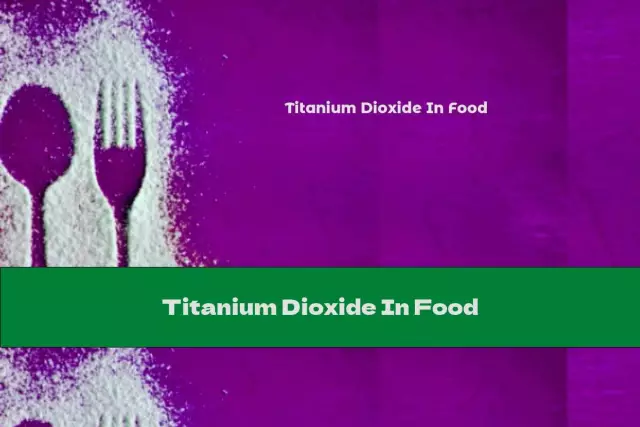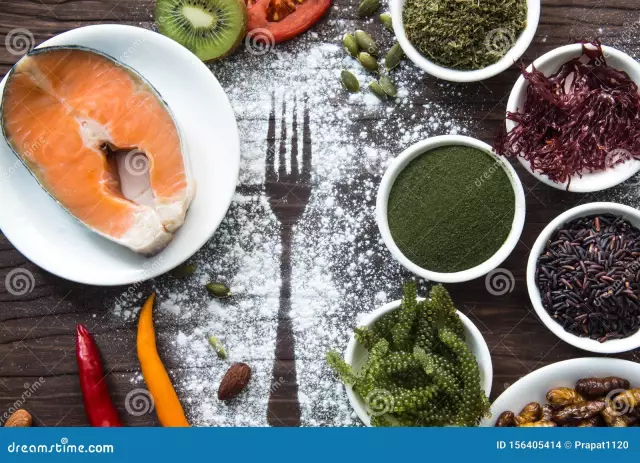- Author Rachel Wainwright [email protected].
- Public 2023-12-15 07:39.
- Last modified 2025-11-02 20:14.
Titanium dioxide
Description of substance

Titanium dioxide (titanium dioxide, E171) is a food additive that is a white coloring matter.
It is a transparent crystalline powder that turns yellow when heated. It occurs in nature in three variations: in the form of minerals anatase, rutile and brookite, which have different crystal structures. To obtain the substance, only titanium dioxide with anatase and rutile structure is used.
Titanium dioxide food has been approved for use in industry since 1994 as a colorant to impart a whitening effect to food.
In its commercial form, titanium dioxide is usually a pure substance, which contains a small amount of impurities of silicon dioxide and aluminum oxide, which improve the processability of the product.
The main properties of titanium dioxide include:
- High whitening ability;
- Chemical resistance;
- Non-toxicity;
- High moisture and weather resistance.
Titanium dioxide does not affect the smell and taste of products; its main purpose is to make products more appetizing. The food additive gives the products the ideal whiteness so attractive to the consumer.
Titanium Dioxide Applications
In the food industry, titanium dioxide is used as a food additive E171, used for the production of quick breakfasts, milk powder, and powdered products. With the help of titanium dioxide, crab sticks and other analogs of fish products, chewing gums, mayonnaise are bleached, as well as glaze, white chocolate, candies, etc. are clarified.
In the production of dumplings, titanium dioxide is used to clarify flour. The dosage of E171 is selected depending on the required whiteness of the dough. In this case, the required amount of dye is added to the mass together with flour and thoroughly mixed for maximum distribution of the substance. The amount of titanium dioxide is 100-200 grams per 100 kg of flour.
In the meat-processing industry, titanium dioxide, the properties of which include good dispersibility (emulsification) and optical attractiveness, is used to bleach bacon, pates and gourmet products.
Titanium dioxide is also used in the production of canned vegetables, in particular for the purpose of clarifying grated horseradish.
The harm of titanium dioxide

To date, formal clinical trials have not been able to identify any negative effects of the E171 dietary supplement. According to the data, titanium dioxide does not dissolve in gastric juice and is practically not absorbed by the body through the intestinal wall. Thus, titanium dioxide does not accumulate in tissues and is completely eliminated from the body.
SanPin 2.3.2.1293-03 allows food manufacturers to use titanium dioxide in quantities that, from the manufacturers' point of view, allow them to achieve the required technological effect.
However, there is still an assumption about the potential harm of titanium dioxide: as studies on rats have shown, inhalation of titanium dioxide powder increases the likelihood of cancer, being carcinogenic to humans.
Some scientists suggest that nanoparticles of a substance are capable of destroying the body at the cellular level, destroying their natural structure, but there is no exact confirmation of this fact, except for tests on rodents.
Despite the fact that titanium dioxide used in food is considered harmless, studies of its effect on the body continue. It is not desirable to exceed the recommended dosage of dietary titanium dioxide (1% per day) for people with weak immunity.
Found a mistake in the text? Select it and press Ctrl + Enter.






